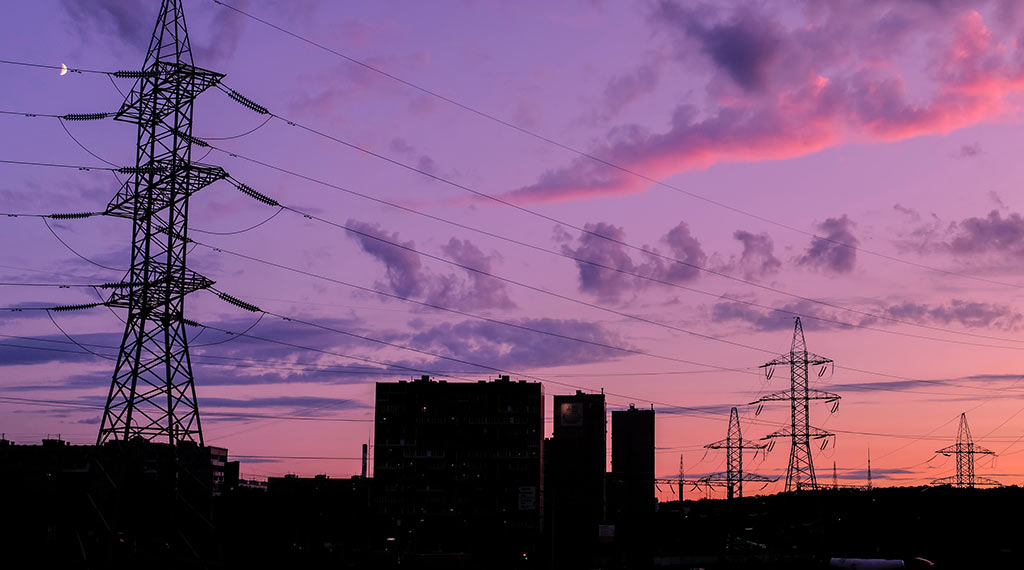From Afghanistan to America, grid sabotage remains a threat

At 4:45 a.m. local time on Friday May 7, large portions of the Afghan capital, Kabul, went dark when explosions took down two electric transmission towers about 30 km outside of the city. The sabotaged infrastructure is owned by a utility named Da Afghanistan Breshna Sherkat (DABS) who manages a 220 kilovolt transmission line that imports electricity from neighboring Uzbekistan.
In September 2019, the same company’s infrastructure was attacked in the northern province of Baghlan, blacking out one third of the entire country. One month before that, in August 2019, the Taliban sabotaged two similar electric transmission pylons in Herat Province, Afghanistan
Because Afghanistan generates only about 25% of its electricity domestically, it relies heavily on this highly vulnerable transmission infrastructure. Blackouts cause an already struggling and poverty-stricken population even more suffering.
Attacks on electric grid infrastructure are a highly effective means to disrupt targeted populations. For this reason, physical attacks on electric grid infrastructure are far more common than most realize.
In 2013, the Knights Templars drug cartel took down the electricity for 420,000 people in Mexico’s Michoacán state, exploiting the ensuing blackout to execute enemies and intimidate the population. In 2014, the entire nation of Yemen went dark, affecting 16 cities and 24 million people following Al Qaeda sabotage. The same year the terrorist group Hamas targeted the electric grid of Israel unsuccessfully. In 2015, approximately 80% of Pakistan’s grid went dark when it was sabotaged by terrorists.
Historically the power grid has been just as attractive a target domestically.
The book “Brittle power: energy strategy for national security” revealed numerous attacks during the 1970s. “Fourteen towers in the rugged forests of Oregon were bombed and at least six toppled in 1974 by two extortionists threatening to black out Portland unless they were paid a million dollars. Pipe bombs caused minor damage at six California towers in a single night in 1975,” wrote authors Amory and Hunter Lovins.
By May 1981, the danger of physical attacks on electric grid infrastructure reached the attention of the U.S. Government’s General Accounting Office (GAO), which published a report entitled “Federal Electrical Emergency Preparedness Is Inadequate.” Over the next 40 GAO published 43 similar reports with warnings about the inadequacy of critical grid infrastructure protection.
In 2013, attacks against two transmission lines and a substation in Arkansas left about 10,000 citizens of that state without power. In 2014, an improvised explosive device (IED) was used in an attempt to blow up a 50,000-gallon diesel fuel tank at a critical transformer substation in Nogales, Arizona.
Perhaps the most well-known act of sabotage in the U.S. is the April 16, 2013 attack of PG&E’s Metcalf substation just outside of San Jose, California.
The perpetrators remain unidentified, but had it been successful, the attack could have blacked out Silicon Valley, home to many of the world’s largest technology corporations for an undetermined amount of time. The same substation was successfully breached again by unknown actors on August 27, 2014.
Grid security researchers consistently complain that physical protection standards are insufficient and poorly enforced. The electric utility industry has largely opposed strengthening physical security standards however, and no significant action has been taken to address the threat.
Over the past eleven years, America’s electric utilities have reported to the Department of Energy a total of 721 physical attacks or acts of sabotage on electric grid infrastructure. During the same period, the industry disclosed only one of these events to the public.
This lack of disclosure means that local and state emergency planners and leaders have no way to determine whether a utility in their area is meeting physical protection standards since regulators do not provide the names of utilities fined for violations, even after vulnerabilities have been mitigated.
As long as people rely on electricity, whether in Afghanistan or America, grid infrastructure will make a tempting target for foreign and domestic terrorists alike.
- The Bad News and the Good News about America’s Electric Grid - December 3, 2025
- Placing Speed to Power on a Firm Foundation - November 26, 2025
- Speed to Power: Saving America’s Transformers - November 21, 2025
